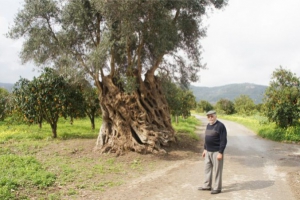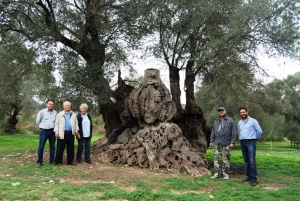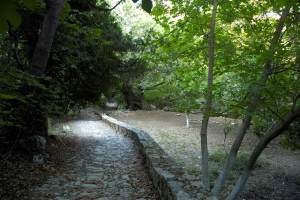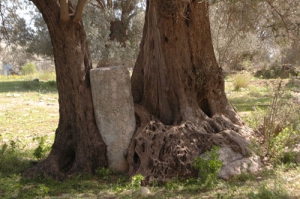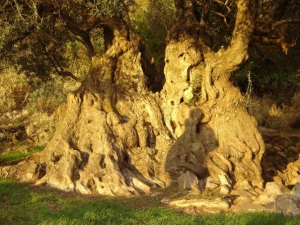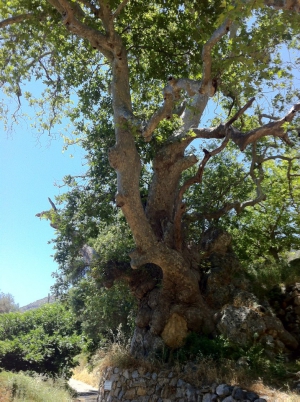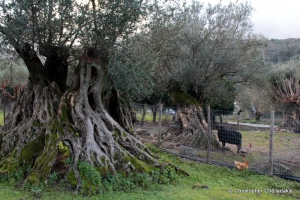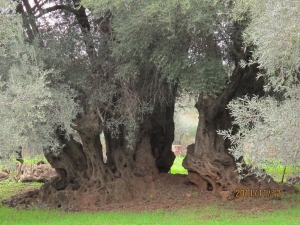The ancient olive Tree of Vatolakkos is grafted onto wild olive subject. Because of its size it has been declared by the Association of Cretan Olive Municipalities as monumental. Access to it is very easy.
The Monumental olive grove of Amari is located at position Rovithis at Monastiraki, Amari Province and has been declared by the Association of Cretan Olive Municipalities as a natural monument. The several ancient trees are a dependency of the Agricultural School of Amari and unfortunately in 1980 about 1000 more ancient trees were uprooted.
This plane tree is located in the Roman cemetery of Ancient Lappa and below the chapel of Five Virgins. Below it there is a cool spring with five taps, symbolizing the Five Virgins that were killed here by the Turks. This plane tree has been declared as a natural monument.
Among the villages and Agii Deka and Mitropoli there are the ruins of ancient Gortyn. Gortyn was the largest and most populous city of Crete during the Roman era. At the same place we meet an important monument of nature. This is the monumental grove of Gortyn occupying a huge area and has centuries-old olive trees. A walk through the historic grove contains many sites of archaeological interest and natural beauty. The tour starts on the main street to Mires. Everywhere around we find piles of stones that once were parts of buildings, scattered fragments of ancient walls, scattered pieces of pottery and fallen pillars.
The Great Olive tree of Aerinos has been declared monumental by the Association of Cretan Olive Municipalities. It is located at an altitude of 700 meters near the settlement Felesina. The olive tree is impressive because apart from its age it has a special morphology with many stones embedded in the trunk.
Below this plane tree, that has been declared as nature monument, the 99 Holy Fathers settled after arriving to Crete from Egypt, Cyprus and Turkey. This is located inside the monastery if the 99 Holy Fathers. They say that its branches form 99 crosses.
At the center of Palea Roumata in Chania there is one the officially characterized monumental olive trees in Crete. The 3000 year old olive tree is surrounded by several other very old trees as well. The perimeter is 10.50 and there is a huge hole, where the locals had hidden weapons during the Turkish Era, while in 1941 a committee against the Germans met in the tree. This is the tree where the guns that were used in the battle of Anavos were also hidden (1941).
The olive tree has been declared by the Association of Cretan Olive Municipalities as a natural monument due to huge size and its location near the postminoan settlement of Kolydra. Its site is named Lakkos and hosts numerous ancient trees, with this specific tree being 3000 years old.











